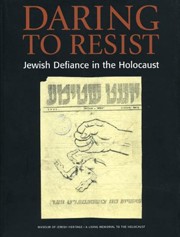By
– September 1, 2011
In his commanding new work, Daniel Blatman, professor of Jewish history and head of the Avraham Hartman Institute of Contemporary Jewry at the Hebrew University of Jerusalem, describes in vivid detail the murderous evacuations westward, ordered by SS Chief Heinrich Himmler, of more than a quarter of a million German concentration camp inmates and slave laborers. The marches began in January 1945 and continued until early May, when the German High Command surrendered to the British, American, and Russian forces unconditionally. The prisoners included not just Hungarian and Polish Jews but also Soviet POW’s, French, Polish, and Dutch resistance fighters and anti-Nazi Germans, among others.
The work views the death marches not only as part of the history of the concentration camps or as the concluding chapters of the Final Solution, but mainly as the last period of Nazi genocidal activity.
Blatman has organized his material into two parts. The “first is devoted to political and systematic history of the period of the death marches.” This part “examines how the concentration camp system, detention facilities, and labor camps reached the evacuation stage and how the evacuations turned into lethal death marches.”
The second part studies the death marches as social history as viewed from below. Here, Blatman destroys the myth that grew up in Germany after the war that the death marches were the work of the SS. On the contrary, utilizing data from twenty archives in six countries Blatman identifies the additional murderers: middle age Volkssturm (militia) men, Hitler Youth (HJ), some as young as age fifteen, regular air force and army personnel, farmers and shop clerks, all eager to defend their families, homes, and homeland (heimat) from what they envisioned as dangerous elements eager to seek revenge.
The distinguished Canadian historian Michael Marrus is at his best when he describes this book as a “strikingly original work that breaks important new ground on the murderous evacuations…of a quarter of a million prisoners.”
The work views the death marches not only as part of the history of the concentration camps or as the concluding chapters of the Final Solution, but mainly as the last period of Nazi genocidal activity.
Blatman has organized his material into two parts. The “first is devoted to political and systematic history of the period of the death marches.” This part “examines how the concentration camp system, detention facilities, and labor camps reached the evacuation stage and how the evacuations turned into lethal death marches.”
The second part studies the death marches as social history as viewed from below. Here, Blatman destroys the myth that grew up in Germany after the war that the death marches were the work of the SS. On the contrary, utilizing data from twenty archives in six countries Blatman identifies the additional murderers: middle age Volkssturm (militia) men, Hitler Youth (HJ), some as young as age fifteen, regular air force and army personnel, farmers and shop clerks, all eager to defend their families, homes, and homeland (heimat) from what they envisioned as dangerous elements eager to seek revenge.
The distinguished Canadian historian Michael Marrus is at his best when he describes this book as a “strikingly original work that breaks important new ground on the murderous evacuations…of a quarter of a million prisoners.”
Carl J. Rheins was the executive director emeritus of the YIVO Institute for Jewish Research. He received his Ph.D. in Modern European History from the State University of New York at Stony Brook and taught courses on the Holocaust at several major universities.





